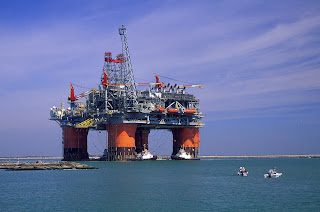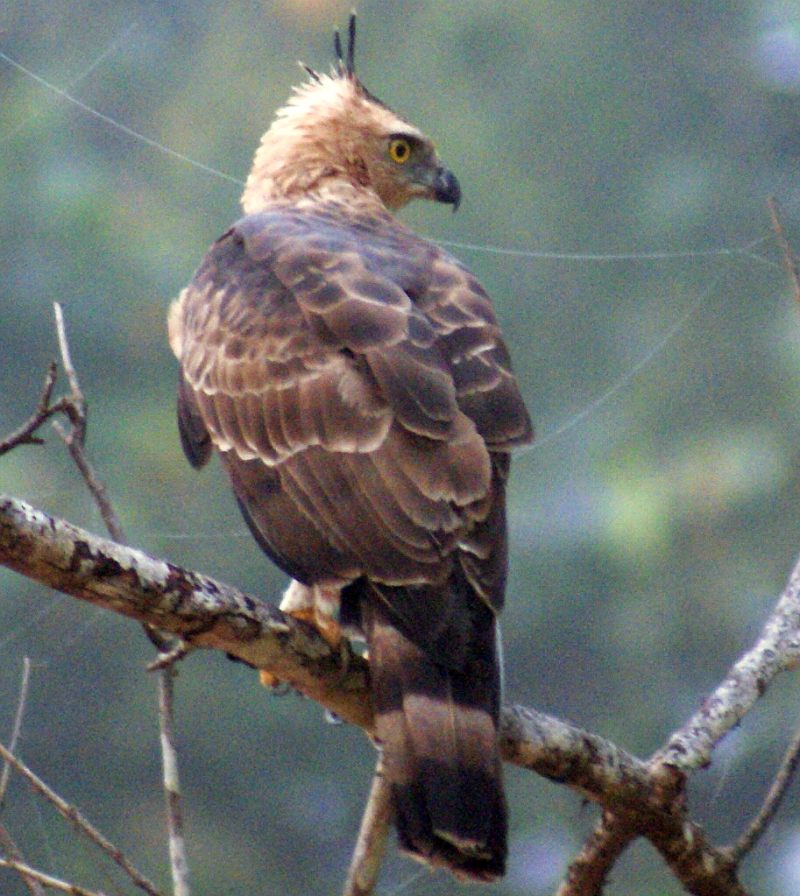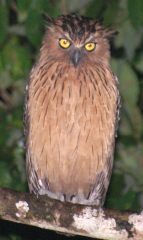The interview of a Dayak man named Kole Adjang from the Setulang village can be found on YouTube. (http://www.youtube.com/watch?v=tpbNo5k6NkI)
He talks about, among other things, the how they are trying to protect their rainforests from the logging industries. He stated that to celebrate everyone in his tribe (Oma'lung tribe) would dance, which has always been a huge part of the traditional culture. Kole works as the head of the Setulang Forest Management Agency.
He goes into how the families in the community are each given 10 land plots to grow rice on, but they only use one plot a year to ensure that the soil will have time to replenish its nourishment. They use a technique in which the vegetation is set on fire to clear the plot and also nurtures the soil. Kole says that it is strictly forbidden to over reach and take new land for farming rice.
Kole speaks about the "forbidden forest" in which is protected by the local Dayak communities. They make sure that no one is logging or damaging the trees within its boundaries. He states that the neighboring villages have allowed their land to be logged by big companies and their land became very unhealthy. He goes on to talk about how those villages have become highly dependent on tourism. which his village strives to negate.
Wednesday, April 30, 2014
Diaspora and Cultural Survival
Dayaks as a population that has been, over the past few years, increasingly been looking towards relocation out of Borneo. Many adolescence move to other Asian countries to go to school or universities. Also many have relocated to find work in Singapore or the peninsula; offshore oil rigs have been a huge factor in Dayak diaspora. Every year the Gawai Dayaks travel home to reunite with their families. The vast migration of this culture has had some drawbacks; as the community become spread out they loss some of their political backing that has been a struggle to get.

(https://blogger.googleusercontent.com/img/b/R29vZ2xl/AVvXsEgaWo8tCrBYXUzBgdrrQWRJ12MkeX2HEONr8UZKn5UFrJR3Wv40tI6dJvx3C0kXUGxCl_qF8VKsDZh6uH2Cx7mcMDHEKD2HLpjBEKWQkKb0ADQz3cLyIT0DJDWEN0aMSimBU46P_HimX8vb/s1600/What+is+the+needed+qualifications+to+work+on+oil+rigs.jpg)
Another recent reason for diaspora is that their has been a outbreak of violence between ethnic and religious groups on account of an economic crisis and political instability. Dayaks and local Malays have rallied together against the ethnic Madurese. Although the Madurese take the main victims, riots in the street have been fired upon by local military, claiming lives.

(http://news.bbc.co.uk/olmedia/1185000/images/_1186401_raised_fists300.jpg)
The Dayaks have been struggling to gain some political antimony for over a decade, but, the so far the move towards this have been mostly unsuccessful. Through the Great Council, the PDKT, and the Dayaks determination they have recently banned together to lobby for collective goals and needs of the Dayaks in Borneo. Through these organization the Dayaks hope to ensure that the population will be able to perverse their identities as a culture.

(https://blogger.googleusercontent.com/img/b/R29vZ2xl/AVvXsEgaWo8tCrBYXUzBgdrrQWRJ12MkeX2HEONr8UZKn5UFrJR3Wv40tI6dJvx3C0kXUGxCl_qF8VKsDZh6uH2Cx7mcMDHEKD2HLpjBEKWQkKb0ADQz3cLyIT0DJDWEN0aMSimBU46P_HimX8vb/s1600/What+is+the+needed+qualifications+to+work+on+oil+rigs.jpg)
Another recent reason for diaspora is that their has been a outbreak of violence between ethnic and religious groups on account of an economic crisis and political instability. Dayaks and local Malays have rallied together against the ethnic Madurese. Although the Madurese take the main victims, riots in the street have been fired upon by local military, claiming lives.

(http://news.bbc.co.uk/olmedia/1185000/images/_1186401_raised_fists300.jpg)
The Dayaks have been struggling to gain some political antimony for over a decade, but, the so far the move towards this have been mostly unsuccessful. Through the Great Council, the PDKT, and the Dayaks determination they have recently banned together to lobby for collective goals and needs of the Dayaks in Borneo. Through these organization the Dayaks hope to ensure that the population will be able to perverse their identities as a culture.
Tuesday, April 29, 2014
Birds of the Dayak
Borneo has a large variety of bird species; there are more then 420 bird species that live on this giant island. The Dayaks believe some birds to be omens and listening to the birds can bring good luck. For example the bird calls and flights are believed to predict whether or not to farm a area or go on a headhunting expedition. One omen that deals with predatory birds is that if you enter the jungle at night and hear the scream of a hawk or an owl; it is a sign that sickness is following you and you must return to the village.




Wallace's hawk eagle (left), Buffy Fish-Owl (right)
Omens that are derived from the cry of birds are always sought before leaving for an expedition, before building new residents, or picking a new spot to farm. The three main bird species that are give the dayaks omen signs: the "Kushah", "Kariak"(below left), and "Katupung" (below right).


(http://www.melbourne2006.com.au/NR/exeres/D5F04F9F-ECEE-41F6-BC72-DDE11D1D7FCE.htm) &
(http://borneobirdrace.wordpress.com/2013/04/23/freshwater-swamp/)


(http://www.melbourne2006.com.au/NR/exeres/D5F04F9F-ECEE-41F6-BC72-DDE11D1D7FCE.htm) &
(http://borneobirdrace.wordpress.com/2013/04/23/freshwater-swamp/)
Wednesday, April 2, 2014
Cosmos
Although there are many differences between tribes, there three basic religious similarities. Most traditional Dayaks are polytheists which means that they believe in many deities that control the world. Dayaks believe that these deities can be coerced into making their lives more pleasant, whether it be from a good harvest to protecting them from other tribes. Like Christianity the Dayaks believe in a creator but they believe that after he created the world his job was done and he now has little to do with the people that inhabit the earth.


Traditional Dayak religion says that the body has two souls; one stayed with the corps until decomposition and the other would stay within the village until the ritual was preformed to send them off on their journey to the land of the dead. The body of the dead would then be burned and the bones would be collected and placed in their ossuary or mausoleum (sandung). This carving is shaped to house the bones and important symbols are inscribes on it; including the hornbill bird (symbolizing the upper world) and a snake/dragon (symbolizing the lower world). At the climax of the ceremony a water buffalo is tied to the sacrificial post (sequnduq) and is speared to death by the relatives of the decease. This is thought to reunite the deceased with his/her spirit. On top of the sacrifice of the water buffalo, pigs too are killed; in earlier times slaves would have replaced the animals. Some of the Dayak cultures believe that the souls are then guided along to the after world by sailing ships that are manned by spirits.
Tuesday, April 1, 2014
Sources
Rigg, Jonathan. Southeast Asia A Region in Transition: A thematic human geography of the ASEAN region. Routledge, 2013
Southeast Asia: A Region in Transition - Jonathan Rigg - Google Books
Geography
MacKinnon, K et al. (1998). The Ecology of Kalimantan. London: Oxford University Press.
Nguyen, T.T.T., and S. S. De Silva (2006). "Freshwater Finfish Biodiversity and Conservation: An Asian Perspective", Biodiversity & Conservation 15(11): 3543-3568)
http://worldwildlife.org
History
Minahan, James. Ethnic Groups of South Asia and the Pacific: An Encyclopedia. Santa Barbara, CA: ABC-CLIO, 2012. Print.
Rigg, Jonathan. Southeast Asia: A Region in Transition. London: Unwin Hyman, 1990. Print.
Cultural World/Society
Discover Borneo, Lonely Planet, 2008.
Cosmos
Bagus Discovery, Kalimantan, http://www.bagus-discovery.com/map/map_dayak_kalimantan02.html accessed 4/2/2014.
Diaspora and Cultural Survival
Rachel Leff, "Violence in Indonesian Borneo Spurs the Relocation of Ethnic Madurese,"
http://www.culturalsurvival.org/ourpublications/csq/article/violence-indonesian-borneo-spurs-relocation-ethnic-madurese (accessed 4/30/2014)
John Teo, "Time for Dayaks to set their sights beyond politics"
http://www.nst.com.my/opinion/columnist/time-for-dayaks-to-set-their-sights-beyond-politics-1.87451 (accessed 4/30/2014)
Further Readings
http://www.ieas.unimas.my/dayak.html
http://www.kborneo.com/read.cfm?THE_ID=905
http://jakhongirshaturaev.wordpress.com/2014/01/02/dayak-people/
Cultural World/Society
Discover Borneo, Lonely Planet, 2008.
Cosmos
Bagus Discovery, Kalimantan, http://www.bagus-discovery.com/map/map_dayak_kalimantan02.html accessed 4/2/2014.
Diaspora and Cultural Survival
Rachel Leff, "Violence in Indonesian Borneo Spurs the Relocation of Ethnic Madurese,"
http://www.culturalsurvival.org/ourpublications/csq/article/violence-indonesian-borneo-spurs-relocation-ethnic-madurese (accessed 4/30/2014)
John Teo, "Time for Dayaks to set their sights beyond politics"
http://www.nst.com.my/opinion/columnist/time-for-dayaks-to-set-their-sights-beyond-politics-1.87451 (accessed 4/30/2014)
Further Readings
http://www.ieas.unimas.my/dayak.html
http://www.kborneo.com/read.cfm?THE_ID=905
http://jakhongirshaturaev.wordpress.com/2014/01/02/dayak-people/
Cultural World/Society
There are basically two main techniques that the Dayaks implement in their surroundings to survive; cultivation and gathering natural resources. Traditionally, Dayaks lived in small communities along the banks of the large river system and mountain ranges; harvesting natural resources such as fish, wild plants, bird nests, herbs, spices, fruits, and wild boar. The Dayaks also cultivate the land to grow rice paddies, palms for the oil, and bananas. They would use a slash and burn technique to open up land for farming and keeping livestock; this technique has recently been on the rise due to the growing demand for commercial farming.
The Dayaks of Kalimantan traditionally lives in communities based in longhouses. Each longhouse is constructed from hundreds of hardwood posts so to elevate the structure from the ground; raising the shelter had multi-fold purpose. Being close to a river system there was the ever present risk of flooding, cattle are able to seek shelter from rain as well as predators underneath, and the elevation promotes a more comfortable living situation where the cool air can circulate. Each longhouse stretches hundreds of meters long and would be lead by its own elders and leaders. The long houses are usually divided into common areas and private living quarters.
Recently, the Dayak people have adapted their living styles to live in individual homes nearby the village center and the longhouses are constructed for modern materials. Also, many have electricity and even parking lots in the front of the building.
Tuesday, March 11, 2014
History
Dayak refers to the multi-ethnic native people of Borneo. It is made up of subgroups of hill tribes and tribes scattered along the major rivers. Up until the 1970's the term Dayak was applied to all non-Muslim indigenous peoples inhabiting the interior of Borneo to differentiate them from the Muslim Malays. The major Dayak tribes consist of Ngaju Dayaks, Maanyan, Lawangan, Bahau, and Bidayuh (Land Dayaks). These separate tribes are connected by similar dwellings, diet and cultural traits. The majority of population inhabit the large island, Kalimantan in Indonesia. Resent estimates states that the Dayak population has reached over 2.4 million people, divided between Indonesia and Malaysia. The largest segment of the culture's language is derived from the Malayo-Polynesian language group. Dayak's official religion is called Kaharingan, which has Balinese Hinduism roots but many Dayaks have converted to Christianity. The vast majority of the Dayak history on the secluded island has been that of isolation from the rest of the world (colonization and industrialization), yet much of the culture history has been recorded in writing through papan turai.
Precolonial Dayaks inhabited the shore lines until Malays migrated to the region, forcing the indigenous peoples to relocate into the mountainous interior. Muslim Malays set up permanent settlements on the coast, ruled by a wealthy sultanate (Brunei). By the mid-1500's both Spanish and Portuguese and later English and Dutch explorers reached the coastal areas but had little to no direst contact with the Dayaks living in the interior. These interaction with foreign powers greatly weakened the sultan's power which led to lawlessness and piracy in the trading route. Pre-interaction with Europeans, the Dayaks were known for their tribal conflicts with the Malays as well as other Dayak tribes in which the heads of their enemies would be taken as ritual trophies. The head-hunting parties would go out and hunt for various reasons including: they believed it gain fertile soil during harvest, fresh heads gave they supernatural strength, atonement for wrong doings, pre-marriage dowry, gave they protection from enemy attacks, and heads were collected as a symbol of power.
Precolonial Dayaks inhabited the shore lines until Malays migrated to the region, forcing the indigenous peoples to relocate into the mountainous interior. Muslim Malays set up permanent settlements on the coast, ruled by a wealthy sultanate (Brunei). By the mid-1500's both Spanish and Portuguese and later English and Dutch explorers reached the coastal areas but had little to no direst contact with the Dayaks living in the interior. These interaction with foreign powers greatly weakened the sultan's power which led to lawlessness and piracy in the trading route. Pre-interaction with Europeans, the Dayaks were known for their tribal conflicts with the Malays as well as other Dayak tribes in which the heads of their enemies would be taken as ritual trophies. The head-hunting parties would go out and hunt for various reasons including: they believed it gain fertile soil during harvest, fresh heads gave they supernatural strength, atonement for wrong doings, pre-marriage dowry, gave they protection from enemy attacks, and heads were collected as a symbol of power.
While the Brunei sultanate's control was diminishing Christian missionaries began embedding themselves into the native tribes. In 1839 James Brooke, a British subject, arrived in the Brunei sultanate to offer military advising in putting down the Dayak rebellions and revolts in western Borneo. As payment for his service the sultan gave Brooke a huge portion of land and named him the raja of Sarawak. Brooke set up a provisional government and sought to end the piracy and head-heading traditions while spreading Christianity. Sarawak became a British territory in 1888, while the Dutch ruled most of the island up until World War II. The Dayaks who have been treated as inferior, both politically and numerically sought to gain recognition from Great Britain. When their efforts failed a majority of Dayaks broke out into a rebellion. To regain peace West Kalimantan was established in 1957. Later the next year the Indonesia government labeled the Dayaks as atheist and thus to some European and American nations, gaining a communist label. During the Cold War West Kaharingan went there many outside interruptions on account of Cold War ideology creating the need for the mainly Dayak state to proclaim a national religion. In the early 1970's West Kaharingan was recognized by the Indonesian government was having Kaharingan as a national religion.
In the latter part of the twentieth century many of the natural resources such as rain forests have been destroyed on account of logging and mining industries. Thus to confront this deforestation Dayaks in cooperation with their Indonesian counterparts have created a network to protect the common interests of those inhabiting Sarawak. Today, the once polarized tribes have a sense of community spurred by the want to protect their homeland.
List of References
- Minahan, James. Ethnic Groups of South Asia and the Pacific: An Encyclopedia. Santa Barbara, CA: ABC-CLIO, 2012. Print.
- Rigg, Jonathan. Southeast Asia: A Region in Transition. London: Unwin Hyman, 1990. Print.
Thursday, February 20, 2014
Geography and Ecology
The Dayak or Dyak, are the indigenous people of the island Borneo; the third largest island in the world. This island is split up into three different states: Brunei, Indonesia, and Malaysia. Borneo is surrounded by the South China Sea. The Dayak people has historically lived along the major water ways such as the Kapuas river system (made up of the Mahakam, Barito, and Rajang rivers); living near large water sources is very common for tribes that have not industrialized and live off the land. Living on the river banks has multi-fold advantages. Some of these advantages include the accessibility of fresh water for both drinking and irrigation, the ability to take advantage of natural food sources (fishing), water-based transport for both trading and travel, and personal hygiene (bathing). Below is a map of the river system that runs though the island.
Borneo is made up of tropical and subtropical moist broadleaf forests (Borneo peat swamp forests), tropical moist forests (Kerangas forests), rain forests (Borneo montane rain forests), freshwater swamp forests, and mangroves (Sunda Shelf mangroves). The rainforests found in Borneo are around 130 million years old, making it one of the old rain forests in the world. Its is home to more than 15,000 different species of flowering plants, 300 species of trees, 221 species of mammals, and 420 species of birds. There is also 440 species of freshwater fish. On top of that there are over 15 species of primate, including the endangered Sumatran orangutans. "Borneo and Sumatra are the only places on Earth where tigers, rhinos, orangutans, and elephants live together." (WWF)

List of References
Borneo is made up of tropical and subtropical moist broadleaf forests (Borneo peat swamp forests), tropical moist forests (Kerangas forests), rain forests (Borneo montane rain forests), freshwater swamp forests, and mangroves (Sunda Shelf mangroves). The rainforests found in Borneo are around 130 million years old, making it one of the old rain forests in the world. Its is home to more than 15,000 different species of flowering plants, 300 species of trees, 221 species of mammals, and 420 species of birds. There is also 440 species of freshwater fish. On top of that there are over 15 species of primate, including the endangered Sumatran orangutans. "Borneo and Sumatra are the only places on Earth where tigers, rhinos, orangutans, and elephants live together." (WWF)

List of References
- MacKinnon, K et al. (1998). The Ecology of Kalimantan. London: Oxford University Press.
- Nguyen, T.T.T., and S. S. De Silva (2006). "Freshwater Finfish Biodiversity and Conservation: An Asian Perspective", Biodiversity & Conservation 15(11): 3543-3568)
- http://worldwildlife.org
Tuesday, February 11, 2014
Introduction to Cultural Blog
Throughout the coarse of the next couple weeks I will be getting to know the Dayak culture located in South East Asia. I will be studying the daily routines, economics, background, homeland/landscape, foods, and much much more. Hopefully I and in return my readers will be able to get a better understanding of the world and the vast complexities of the cultures that inhabit it.
I look forward to this experience.
Joshua Shields.
I look forward to this experience.
Joshua Shields.
Subscribe to:
Comments (Atom)






